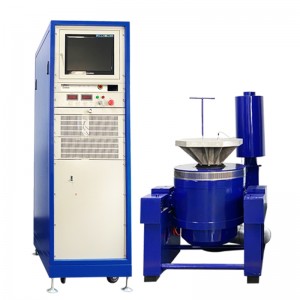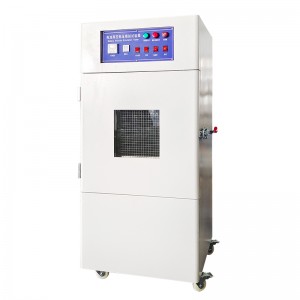New energy battery high frequency electromagnetic vibration test machine
The electromagnetic vibration test bench is mainly used for product vibration environment and impact environment test, environmental stress screening test and reliability test.
The electromagnetic vibration testing machine is completely designed according to the relevant testing standards of batteries. It simulates the battery to be tested under certain vibration test conditions. The battery or battery pack is fixed on the vibration table, and the battery samples are perpendicular to each other according to the specified frequency, acceleration and displacement mode. vibrate in 3 directions
Product Usage:
The vibration test bench is mainly used for vibration environment and shock environment test, environmental stress screening test and reliability test of industrial products such as circuit boards, batteries, aircraft, ships, rockets, missiles, automobiles and household appliances;
The battery electromagnetic shaker meets the standard
“GB 31241-2014″”Safety Requirements for Lithium-ion Cells and Battery Packs for Portable Electronic Products”"
GB/T 18287-2013 “”General Specification for Lithium Ion Batteries for Cellular Phones”"
GB/T 8897.4-2008″”Primary Battery Part 4 Safety Requirements for Lithium Batteries”"
YD/T 2344.1-2011″”Lithium Iron Phosphate Battery Packs for Communications Part 1: Integrated Batteries”"
GB/T 21966-2008 “”Safety Requirements for Lithium Primary Cells and Accumulators in Transportation”"
MT/T 1051-2007 “”Lithium-ion batteries for miner’s lamps”"
YD 1268-2003″”Safety Requirements and Test Methods for Handheld Lithium Batteries and Chargers for Mobile Communications”"
GB/T 19521.11-2005 “”Safety Specifications for Inspection of Dangerous Characteristics of Dangerous Goods in Lithium Battery Packs”"
YDB 032-2009″”Backup lithium-ion battery pack for communications”"
UL1642:2012″”Lithium Battery Standard (Safety)”"
UL 2054:2012″”Safety Standards (Lithium Batteries)”"
UN38.3 (2012)Recommendations on the Transport of Dangerous Goods – Manual of Tests and Criteria Part 3
IEC62133-2-2017 “”Safety Requirements for Batteries and Battery Packs Containing Alkaline or Non-Acid Electrolytes”"
lEC 62281:2004″”Safety Requirements for Lithium Primary Cells and Accumulators in Transportation”"
IEC 60086:2007″”Primary Battery Part 4 Safety Requirements for Lithium Batteries”"
GJB150, GJB360, GJB548, GJB1217,MIL-STD-810F, MIL-STD-883E and other test specifications”"”
| Product specifications | 690kgf, 1000kgf |
| Maximum sinusoidal excitation force | 300kgf peak |
| Maximum random excitation force | 300kg.ff |
| Maximum shock excitation force | 1-4000HZ |
| Frequency Range | 600kg. f peak |
| maximum displacement | 40mm p-p (peak-to-peak) |
| Maximum speed | 6.2m/s |
| Maximum acceleration | 100G(980m/s2)120kg |
| Load (moving coil) | 12KG |
| Vibration isolation frequency | 2.5Hz |
| Moving coil diameter | (Working table diameter) Medium 150mm |
| Moving coil quality | 3kg |
| Countertop screws | 13xM8 |
| Magnetic flux leakage | <10gauss |
| Equipment size | 750mmx560mmx670mm (vertical table) (can be customized) |
| Equipment weight approx. | 560kg |
| Table size | 400*400mm |
| Material | Aluminum-magnesium alloy |
| Countertop quality | 14kg |
| Fixed hole | M8 stainless steel screw sleeve, durable and wear-resistant |
| Maximum frequency of use | 2000Hz |
| Output Power | 4KVA |
| The output voltage | 100v |
| Output current | 30A |
| Amplifier size | 720mmx545mmx1270mm |
| Weight | 230kg |













